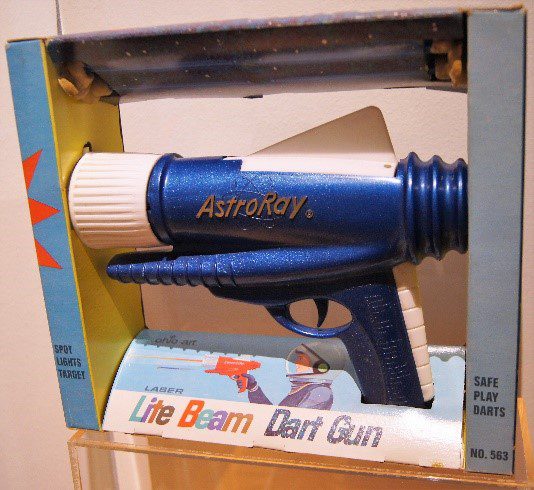By: Tim Pawlak
America was changing in the 1950s. You could see it everywhere you looked. Change was happening, culturally, and economically, but the most evident changes were in style and design. Functionalism and Modernism were the prevailing styles of the early 50s, evoking simplicity, utility and a Scandinavian aesthetic. For example, take the simplistic and utilitarian Lustron home that resides in the Ohio History Center. As the decade wore on, though, a new, wild style called Atomic Age design gained popularity. This new style did not come out of nowhere, but from up above.
America was obsessed with the idea of space and space exploration in the 1950’s. The United States and the U.S.S.R. were in a Space Race to see who would get there first. In 1957, the Soviet Union successfully launched their Sputnik satellite. The U.S. countered in 1958 with the launch of Explorer I and it was off to the races. Over the next decade, the two countries, locked in the Cold War, would use space as a very important stage to show off their respective supremacy and military might.
On the home front we saw the influence of the Space Race right in our own homes. Automobile styling came a long way from the rounded, shoebox look of a 1948 Crosley with its sweeping, subtle lines and stocky body. By the late 1950s, auto designers like Harley Earl and George Krispinsky, had turned the American automobile into a work of art with wild tailfins and aircraft inspired cockpits. These concept cars, or Dream Cars as they put it at the time, embodied Atomic Age design and heralded the promise of the bright future that the Space Age would bring us. No Dream Car embodied the spirit of the times more than the Harley Earl designed Firebird II. This jet inspired concept car not only sported radical dorsal tail fins and bubble-top glass cockpit, it was propelled via a gas turbine engine!
This is not to say that the futuristic cars of tomorrow only resided as sketches on the corkboards of the designers offices. One must look no further than arguably the most classic of classic 1950s cars, the 1957 Chevrolet Bel Air, an example of which can be seen towing an Airstream camper at the entrance to the 1950s exhibit at the Ohio History Center. By the late 1950s the radical concepts that graced the auto show floors had made it to the everyday American’s driveway. All of the major auto companies jumped in on the craze. It was the new norm.
1957 Chevrolet Bel Air Sedan at the Ohio History Center.
If we were to enter the American home of the Atomic Age, we would see again how the Space Race was represented all throughout it. Designer George Nelson once said, “Design is a response to social change.” This social change was a product of the Cold War that the U.S. was waging against the U.S.S.R. Design followed suit to where something like the humble wall clock was now an art piece, reminiscent of the Soviet Sputnik satellite. That style of clock was conceived by Irving Harper and popularized by Modernist design firm George Nelson Associates. Lighting got its own Atomic Age treatment, again thanks to Harper. The Bubble Lamp gave a space-inspired look to anywhere it was installed. Both of these examples of Atomic Age styling can be seen at the Ohio History Center’s 1950s exhibit, adorning the Lustron home.
George Nelson Ball Clock inside of the Lustron home at the Ohio History Center.
The Space Race with the U.S.S.R. even made it to the American child. The toy industry was quick to capitalize on the American preoccupation with space. This manifested itself in numerous toys that would spark the imagination and set kids off on grand adventures through space and time. As long as they had their trusty Astro-Zapper gun and Moon Rover model, they were ready for adventure.

Astro Ray Lite Beam Dart Gun by Ohio Art.
Design is never made in a vacuum. The styles that we experience every day are a product of the society that we live in. Every era has its own unique styles and events that shape them. I urge you to take a look at seemingly everyday objects and look beyond the surface to the story that it has underneath. We leave traces of our history everywhere, but with design, we get to show it off.
What are some objects that look like they were designed using this style?
How has modern culture had an effect on design today? Do we use different types of materials today?
What are some events or social movements in history that you think had a major effect on style and design?